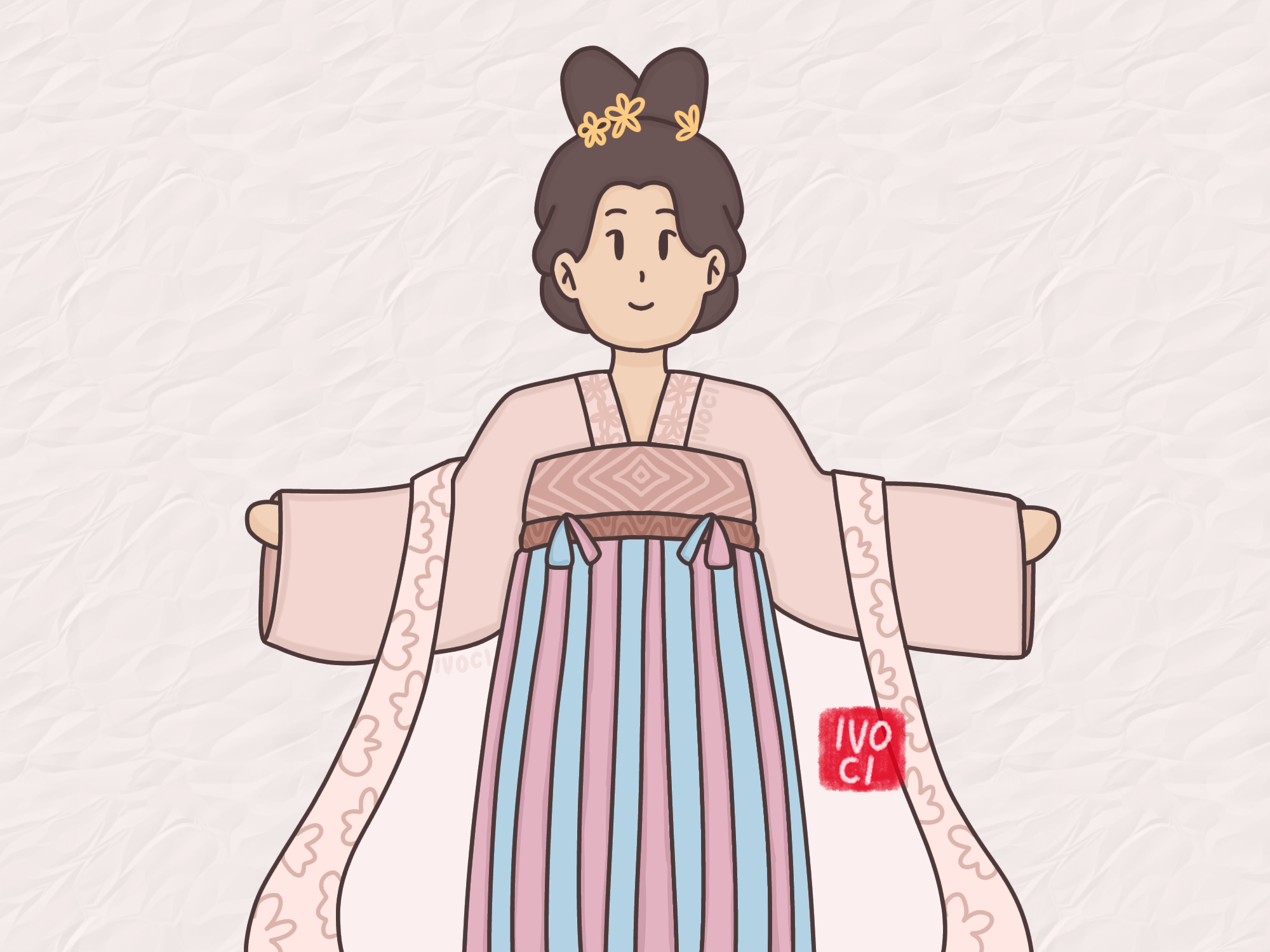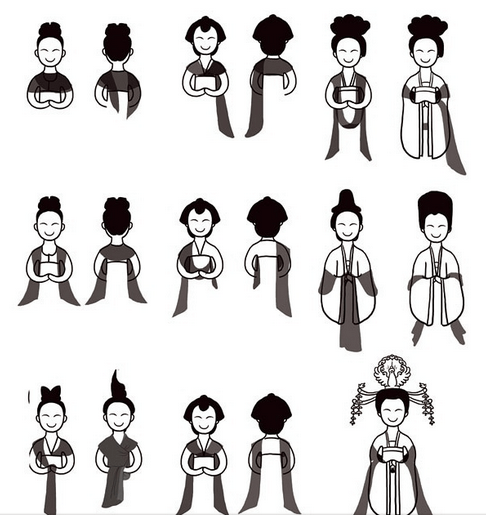Pibo (Chinese: 披帛 ; pinyin: pī bó), also known as pizi (Chinese: 披子 ; pinyin: pī zi), is a kind of decorative shawl, which was introduced to China by the Silk Road from West Asian culture, and later became a hanfu accessory.
Although commonly called pibo, the name “pibo” actually appeared around the end of the Tang dynasty. Previously, pibo was often referred to as pei (Chinese: 帔 ; pinyin: pèi).
Pibo then spread to Korea, Japan, and Vietnam, and was mostly worn by women, usually draped over the shoulder, or wrapped around the elbow.
Shape
Pibo can be more than two meters in length.
The materials used are usually thin and soft threads with brilliant colors, and decorative patterns on these threads can be made in various ways such as embroidery, drawing, or printing.
History
Pibo was first introduced to East Asia by the Silk Road, a Persian culture originating in West Asia, and the Persian custom of wearing silk may have been influenced by Hellenism, but related claims are not confirmed.
The silk unearthed at Dunhuang and Turpan dates from the same era as the silk found in Chang’an from the Tang dynasty in the Central Plains.
The silk found along the Silk Road also reflects the silk trade that was active at that time.
Sui and Tang Dynasties
Pibo became popular in the Sui and Tang dynasties.
Most of the women depicted in the poetry, murals, and paintings of the Sui and Tang dynasties wore pibo.
In the early Tang dynasty, the pibo was worn with one end tucked into the waist of a skirt or half sleeve, and the other end wrapped around the shoulders and hung naturally.
In the late Tang dynasty and Five Dynasties and Ten Kingdoms, it was popular to wear the pibo from back to front, and then put it on the other arm, it takes about five meters of silk to wear the pibo in this way.
Pibo from the Sui and Tang dynasties are often made of thin gauze, or blackish color, depicting a pattern, or pasted gold and silver traces, but also on two sides of different colors, between colors, embroidery, and other styles.
At that time, pibo had no clear dress system requirements, only for decoration.
In the Tang dynasty, pibo was originally used for imperial concubines, female singers, and dancers. But after the Kaiyuan period, pibo was popularized among people, regardless of status, they can use it.
Since then, the pibo has officially entered women’s lives, although it has not yet entered the clothing system, but has become a kind of traditional clothing.
Song dynasty
After the Song dynasty, pibo gradually flattened and hung, and the direction of the rules changed.
In the early Northern Song dynasty, similar pibo was still used in previous generations, which were gradually replaced by the Xiapei and Zhipei folk in dress codes.
After the Southern Song dynasty, pibo gradually became less common in everyday life.
Yuan dynasty
In the Yuan dynasty, the pibo was very rarely worn in everyday life and was only used as a performance costume for dance and opera.
Ming dynasty
The Ming dynasty, as a Han regime following a minority regime, returned to the Tang and Song dynasties in terms of the basic style of women’s clothing.
Pibo evolved into xiapei which can often be seen in the Ming dynasty.
The custom-made xiapei is about 11 cm wide and about 190 cm long, which are two thin brocades similar to the long silk shawls used by women today, fitted from the back end of dashan (Chinese: 大衫 ; pinyin: dà shān), and draped over both shoulders, until to the front of the body, with jade or gold or silver pendant hanging below.
Since this was part of the uniform system, xiapei worn by women of different classes would be different to show their status and position.
The dashan and xiapei of the Ming dynasty were wide and dignified and were only worn on very important occasions.
In traditional paintings, dashan and xiapei can be seen in formal portraits of noble women in formal attire.
The different levels of xiapei worn by women are mainly reflected in the colors and patterns of decoration. This pattern rule is similar to the function of the buzi (补子) class pattern on official uniforms at the time and is also a form of expression of rank.
Since the Ming dynasty, with women wearing fengguan and xiapei at the same time, “Fengguan Xiapei” has gradually become one word, and the two originally independent evolutions of costume accessories seem to be increasingly inseparable from each other.
Qing dynasty
The noblewomen of the Qing dynasty also used the xiapei, which changed a lot during this period compared to the previous dynasty.



Leave a Reply